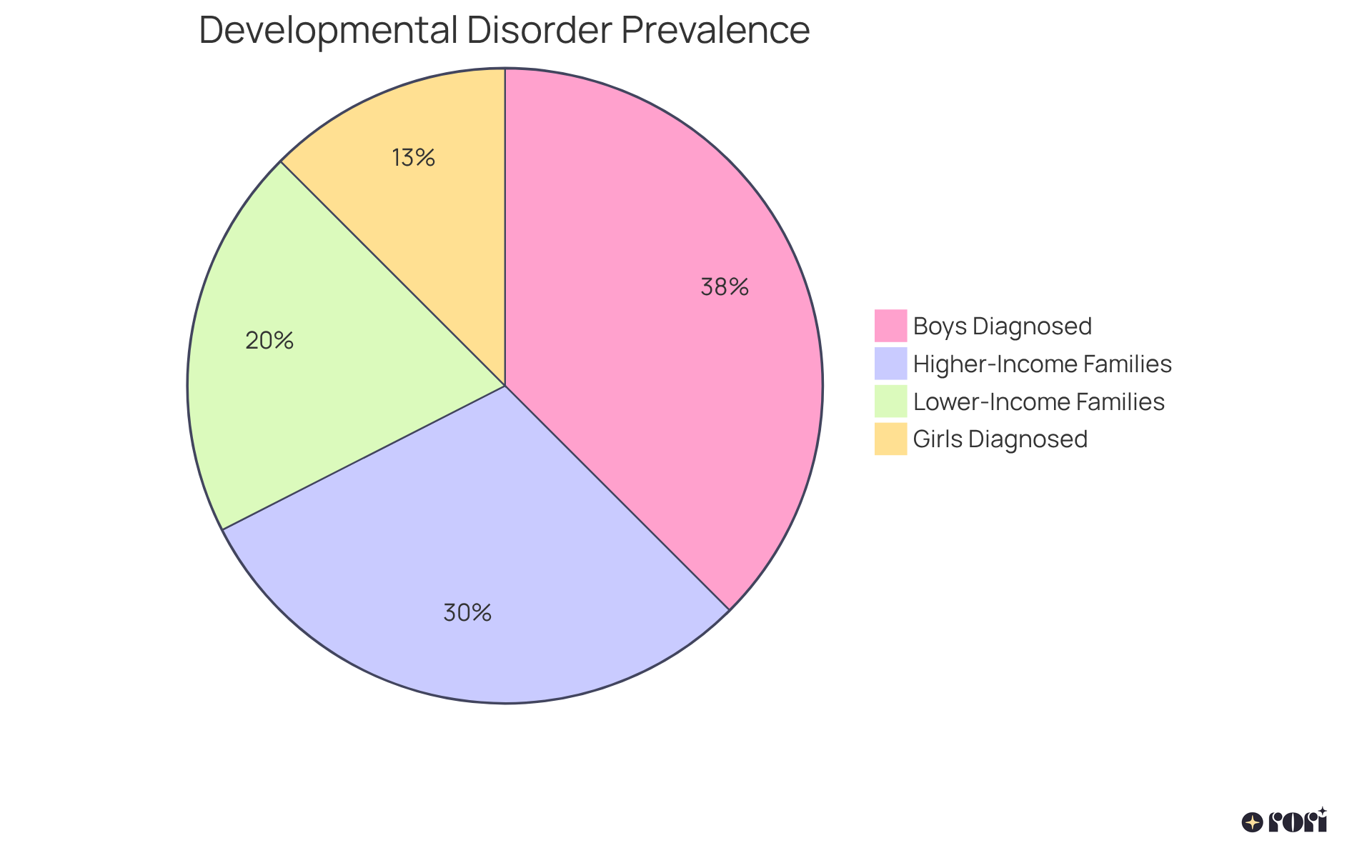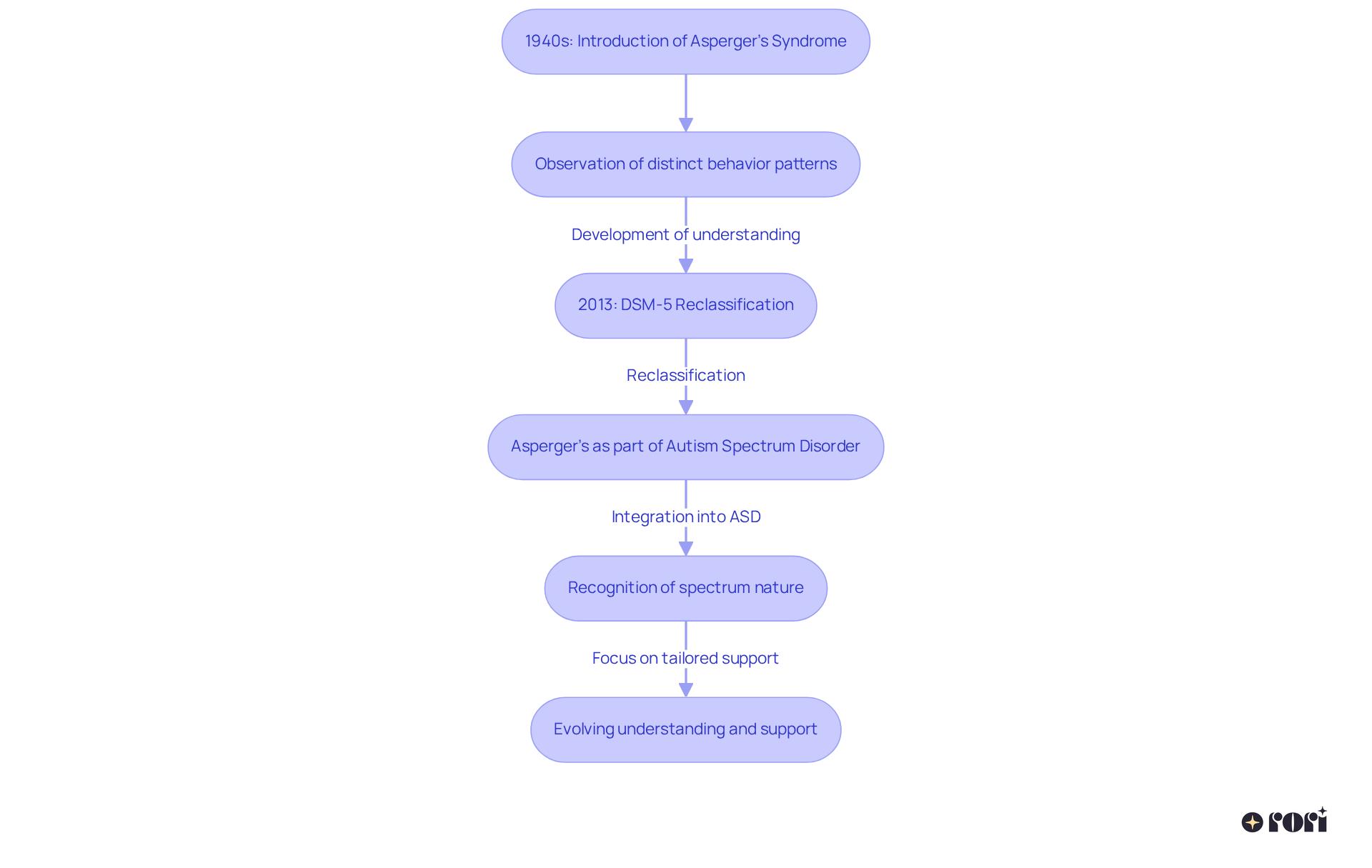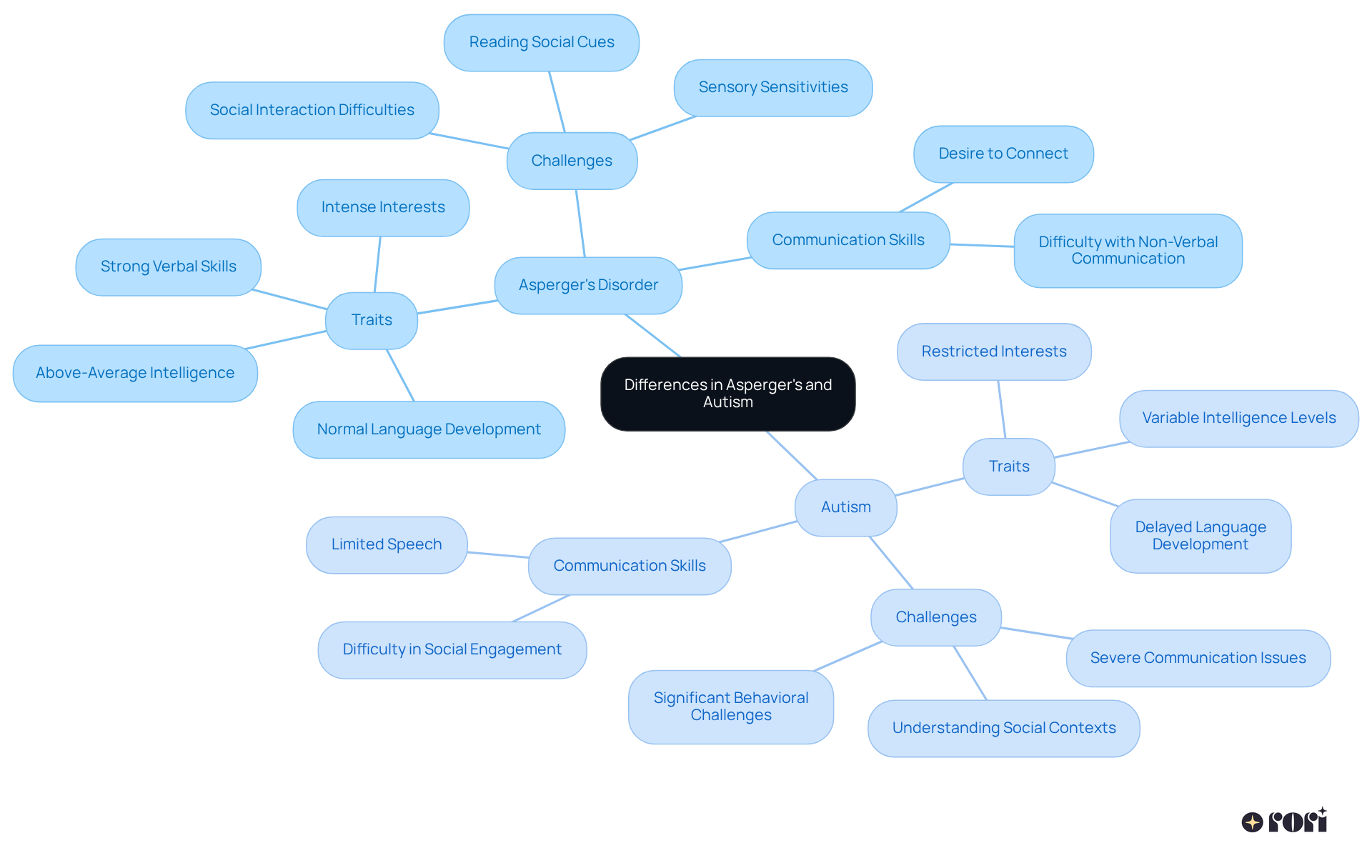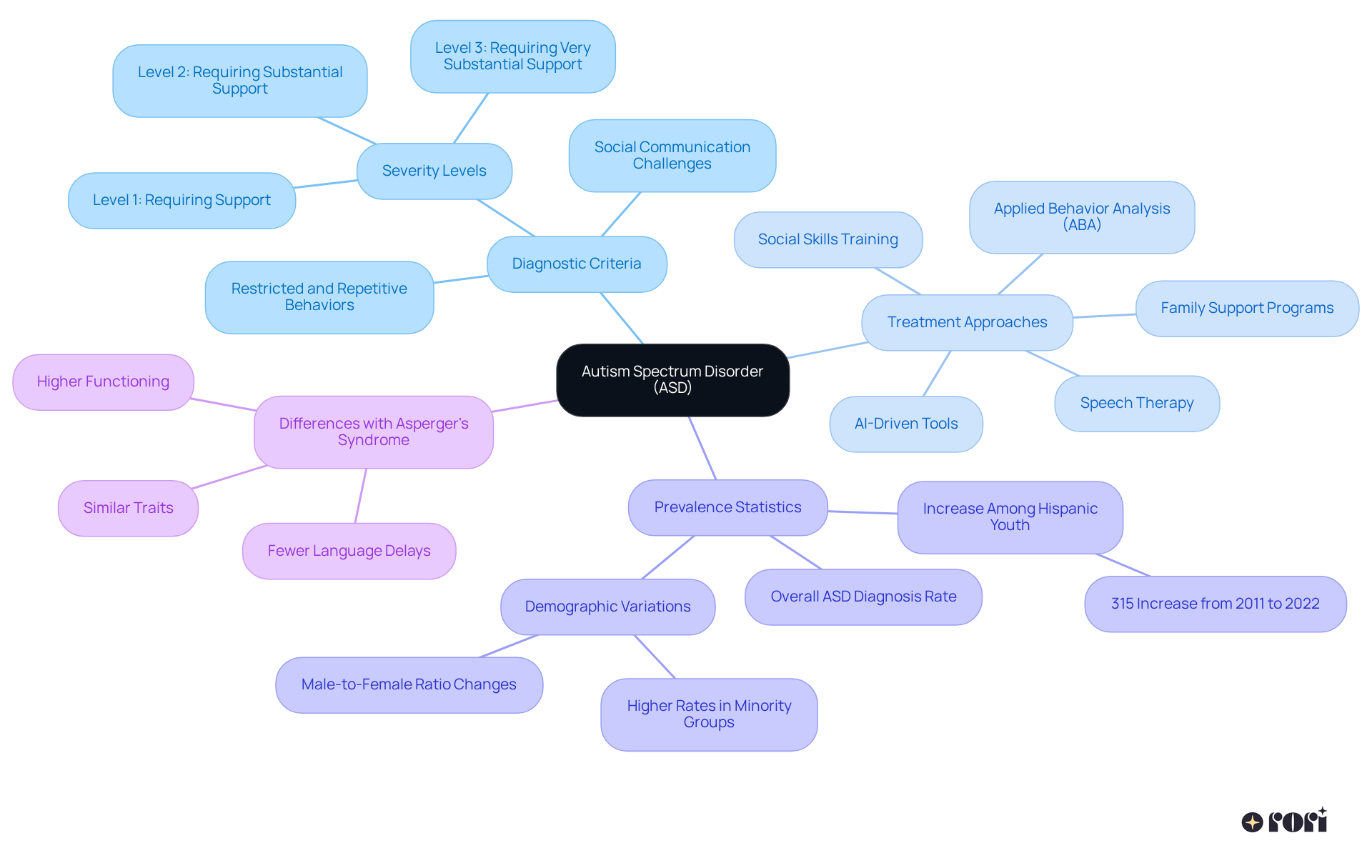The difference between Asperger's Syndrome and Autism is primarily that Asperger's is now classified under the broader Autism Spectrum Disorder (ASD). This reflects milder symptoms and typically no significant language delays.
It's interesting to note how this classification has evolved! The article highlights this historical reclassification in the DSM-5 and emphasizes the varying degrees of challenges individuals on the spectrum face. This really underscores the need for tailored interventions based on these differences.
Let’s explore this together!
The ongoing conversation about neurodevelopmental disorders often leads to a pivotal question: is there a difference between Asperger's and autism? 🤔 With Asperger's now classified under the broader Autism Spectrum Disorder (ASD), understanding the nuances between these conditions is essential for effective support and intervention.
This article delves into the historical context, distinctive traits, and evolving diagnostic criteria, shedding light on how these terms have transformed over time. As awareness grows, so does the urgency to address the unique challenges faced by individuals on this spectrum. What implications does this have for tailored treatment and understanding? Let’s explore this together! 💖
The discussion around Asperger's condition often leads to the question, is there a difference between Asperger's and autism, as it is now classified under the broader Autism Spectrum Disorder (ASD) category. ASD encompasses various neurodevelopmental conditions that can make social interactions, communication, and repetitive behaviors a bit tricky. Those with Asperger's often show milder symptoms, typically demonstrating average or above-average intelligence, and they usually don’t face significant delays in language development. This really highlights the spectrum nature of the condition—individuals can have a wide range of challenges and abilities!
Did you know that about 1 in 31 kids in the U.S. are identified with developmental disorders? And it’s interesting to note that boys are almost four times more likely to receive a diagnosis compared to girls. For our little ones around 4 years old, the prevalence is about 1 in 34, or 2.9%. Plus, the average age for an autism diagnosis is 4.7 years for kids from lower-income families, while it’s 5.2 years for those from higher-income households. Understanding whether there is a difference between Asperger's and autism is so important! It helps us tailor effective interventions and support strategies for individuals on the spectrum.
Let’s explore this together! Knowing these facts can empower us to seek the right help and resources for our children. We’re here to help you every step of the way!

The term 'Asperger's Syndrome' was first introduced in the 1940s by an Austrian pediatrician. He noticed a distinct pattern of behavior in children, often marked by social interaction difficulties and a limited range of interests. For many years, Asperger's syndrome was viewed as a distinct diagnosis within the spectrum of autistic disorders, prompting the inquiry, is there a difference between Aspergers and autism, and it was often referred to as 'high-functioning autism.'
However, in 2013, the DSM-5 made a significant change by addressing the question of is there a difference between Asperger's and autism by reclassifying Asperger's as part of Autism Spectrum Disorder (ASD). This shift reflects a growing consensus among researchers regarding the question of whether there is a difference between Aspergers and autism, suggesting that the differences between various developmental disorders aren't as clear-cut as we once thought. The goal of this reclassification was to simplify the diagnostic process, ensuring that individuals receive tailored support based on their unique needs, rather than being boxed into strict categories.
This evolution in understanding is crucial. It highlights the importance of recognizing the spectrum nature of this condition, which encompasses a wide variety of symptoms and challenges. As we move forward in this field, it's essential to adapt our methods for diagnosis and intervention, fostering a more inclusive environment for everyone on the spectrum.
Interestingly, many professionals once viewed Asperger's syndrome as a less severe form of the condition, often describing these individuals as 'high-functioning.' Furthermore, the prevalence of developmental disorder diagnoses has significantly increased over the years. According to the CDC, 1 in 44 children were identified with ASD in 2021. This trend underscores the importance of understanding the evolving terminology and classification within the spectrum of autism-related conditions.
Let’s explore this together! By staying informed, we can better support our loved ones and navigate this journey with confidence.

People with Asperger's Disorder have some unique traits that lead many to wonder, is there a difference between Asperger's and autism when comparing various developmental disorders? While both groups might face challenges in social situations, is there a difference between Asperger's and autism, since those with Asperger's syndrome usually don’t experience significant language delays and often have normal or even above-average intelligence and strong verbal skills? They genuinely want to connect with others but may find it tricky to read social cues and norms.
On the other hand, individuals with more severe forms of autism might struggle more with communication, leading to the question of is there a difference between Asperger's and autism, as they face limited speech and significant challenges in understanding social contexts. When it comes to behaviors, those on the higher-functioning end of the spectrum often dive deep into specific topics, reflecting their unique ways of thinking. Did you know that current studies indicate about 2 to 6 out of every 1,000 children in the U.S. are diagnosed with a condition now under the broader Autism Spectrum Disorder (ASD) umbrella? Recognizing if there is a difference between Asperger's and autism is so important for tailoring effective interventions and support strategies. Let’s explore this together and find the best ways to help!

The DSM-5 lays out the diagnostic criteria for Autism Spectrum Disorder (ASD), highlighting persistent challenges in social communication and interaction, along with restricted and repetitive behaviors. If you’ve heard of Asperger's Syndrome, you may ask, is there a difference between Asperger's and autism, since individuals diagnosed with it often show similar traits but typically function at a higher level with fewer language delays.
When it comes to treatment, there’s a variety of approaches available. One foundational method is Applied Behavior Analysis (ABA), which focuses on reinforcing positive behaviors and teaching new skills tailored to each person’s unique needs.
You might find that additional interventions can include:
All aimed at improving the quality of life for individuals and their families. Isn’t it fascinating how technology is playing a role too? AI-driven tools are increasingly being used to customize treatment plans, ensuring care is effective and responsive to each individual’s changing needs.
Statistics show that ABA therapy has proven to be quite effective, with many young individuals making significant strides in their behavior and social skills. For instance, did you know that the ASD diagnosis rate among Hispanic youth surged by 315% from 2011 to 2022? This really underscores the growing prevalence of ASD and the need for effective treatment strategies.
As noted by Luke P. Grosvenor, PhD, "In this cross-sectional study of children and adults in the US, ASD diagnosis rates increased substantially between 2011 and 2022, particularly among young adults, female children and adults, and children from some racial or ethnic minority groups." This highlights the importance of personalized approaches that cater to the diverse needs of those with autism, particularly in understanding if there is a difference between Asperger's and autism.
Additionally, the DSM-5 categorizes ASD into three severity levels, which helps us understand the varying support needs of individuals diagnosed with the disorder. Let’s explore this together and see how we can better support our loved ones!

Understanding the differences between Asperger's Syndrome and Autism Spectrum Disorder (ASD) is important for navigating the complexities of neurodevelopmental conditions. While Asperger's is now part of the ASD umbrella, recognizing the spectrum's nature helps us support individuals more effectively. This understanding is key to tailoring strategies that meet individual needs, ultimately improving the quality of life for those on the spectrum.
Throughout the article, we highlighted some key points, like the historical context of Asperger's terminology and how our understanding of symptoms has evolved. It’s important to note that individuals with Asperger's often show milder symptoms and usually have average or above-average intelligence. In contrast, those with more severe forms of autism may encounter significant communication challenges. We also touched on various treatment approaches, such as Applied Behavior Analysis (ABA) and social skills training, which can be customized to fit each person's unique needs.
In light of these insights, let's foster awareness and understanding of the differences between Asperger's and autism. By doing this, we can help create a more inclusive environment that acknowledges the diverse needs of individuals on the spectrum. Engaging in informed conversations and seeking the right resources can empower families and communities to provide the necessary support. Together, we can ensure that every individual has the chance to thrive. Let’s explore this journey together!
What is Asperger's Syndrome?
Asperger's Syndrome is a condition that is classified under the broader Autism Spectrum Disorder (ASD) category. It typically involves milder symptoms compared to other forms of autism, with individuals often demonstrating average or above-average intelligence and no significant delays in language development.
How does Asperger's Syndrome differ from Autism Spectrum Disorder (ASD)?
Asperger's Syndrome is considered a part of Autism Spectrum Disorder (ASD). While both involve challenges in social interactions and communication, individuals with Asperger's generally exhibit milder symptoms and do not experience significant delays in language development.
What are some common characteristics of individuals with Asperger's?
Individuals with Asperger's often show average or above-average intelligence and may have difficulties with social interactions and communication, as well as exhibit repetitive behaviors.
What is the prevalence of developmental disorders in children?
About 1 in 31 kids in the U.S. are identified with developmental disorders. For children around 4 years old, the prevalence is about 1 in 34, or 2.9%.
Are there differences in autism diagnosis rates between genders?
Yes, boys are almost four times more likely to receive a diagnosis of autism compared to girls.
At what average age are children diagnosed with autism?
The average age for an autism diagnosis is 4.7 years for children from lower-income families and 5.2 years for those from higher-income households.
Why is it important to understand the differences between Asperger's and autism?
Understanding the differences helps tailor effective interventions and support strategies for individuals on the autism spectrum, ensuring they receive the appropriate help and resources.